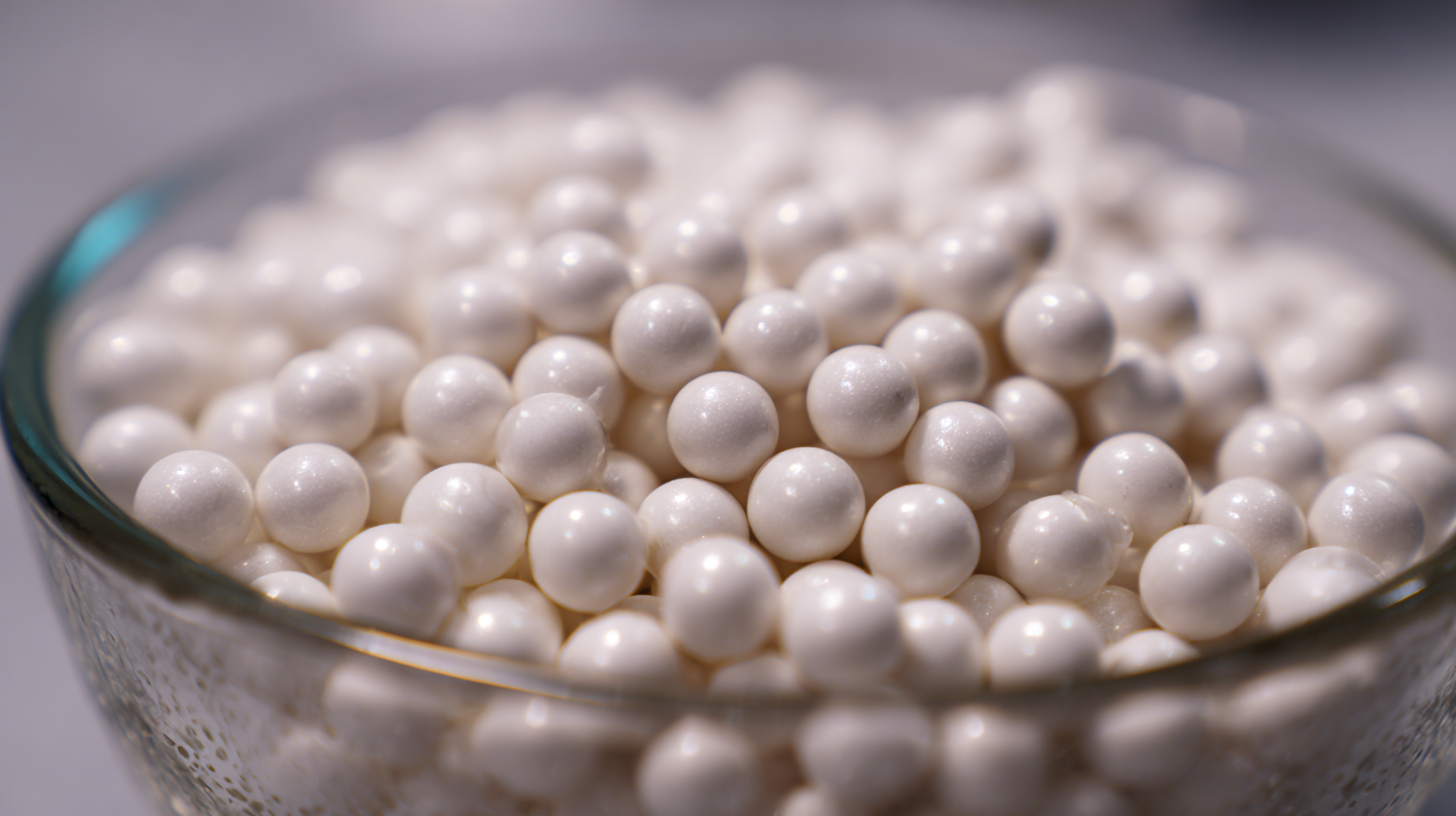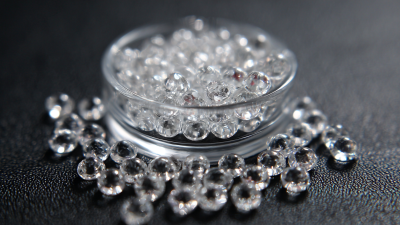Zirconium Oxide Beads have emerged as an essential component in various industrial applications, thanks to their superior properties such as high hardness, chemical stability, and resistance to wear. According to a recent report by MarketsandMarkets, the global zirconium market is anticipated to reach USD 2.74 billion by 2025, with zirconium oxide beads playing a crucial role in key sectors such as ceramics, electronics, and pharmaceuticals. The increasing demand for high-performance materials in grinding, mixing, and dispersion processes further emphasizes the importance of selecting the right zirconium oxide beads tailored to specific applications. As industries seek efficiency and quality improvements, understanding the various types and characteristics of zirconium oxide beads becomes vital for maximizing operational performance and determining the most suitable solutions for diverse requirements.

When selecting zirconium oxide beads for your project, several key factors should be considered to ensure optimal performance. First and foremost, the bead size plays a crucial role in achieving the desired dispersion and mixing efficiency. Smaller beads tend to generate finer particles, making them ideal for applications requiring high precision, while larger beads may be better suited for more robust processes where speed is essential.

In addition to size, the specific application and the medium in which the beads will be used are critical considerations. For example, if the beads will be utilized in a highly corrosive environment, it's essential to choose beads with enhanced durability and chemical resistance. Furthermore, the bead's density can affect the settling and dispersion characteristics in liquid mediums, thus impacting the overall effectiveness of the application.
Overall, understanding the unique requirements of your project and balancing these factors will lead to the successful selection of zirconium oxide beads tailored to your needs.
When selecting zirconium oxide beads for specific applications, it’s crucial to understand the varying types available and their distinct properties. Zirconium oxide beads are often categorized based on their density, wear resistance, and chemical stability. For example, high-density beads are preferred in milling processes, as their mass ensures efficient grinding. According to a recent industry report by MarketsandMarkets, the demand for high-performance zirconium oxide beads is projected to increase by 6.2% annually, driven primarily by advancements in the manufacturing sector.
Additionally, the concentration of yttria in zirconium oxide beads significantly influences their durability and thermal stability. Yttria-stabilized zirconium oxide (YSZ) beads, featuring a typical yttria content of 5-10%, exhibit enhanced mechanical properties, making them suitable for more abrasive applications. A study published in the Journal of Materials Science reported that YSZ beads outperform traditional ceramic beads in terms of wear resistance, highlighting their suitability for intense milling operations in pharmaceuticals and inks. Understanding these differences enables manufacturers to choose the right zirconium oxide beads tailored to their specific operational needs, ensuring superior product performance.

When selecting zirconium oxide beads for various applications, understanding the impact of size and shape on performance is crucial. Research shows that smaller beads often enhance the surface area, leading to improved reaction rates in processes such as grinding and polishing. Conversely, larger beads can provide better mass transfer rates, making them more suitable for applications that require higher throughput.
Tip: Choose smaller beads if you're focusing on maximizing surfaces for finer polishing. This approach allows for a greater contact area and more efficient material removal. However, for applications involving larger particles or higher volumes, consider utilizing larger beads to optimize processing speed and efficiency.
The shape of the beads also plays a significant role in their effectiveness. Spherical beads tend to exhibit lower wear and a more uniform flow pattern, while irregular shapes can offer enhanced crushing capabilities due to their increased angles. Industry reports indicate that the right combination of size and shape can lead to performance improvements by up to 30% in grinding efficiency.
Tip: Evaluate your specific application needs before selecting bead shapes; using a combination of shapes might yield optimal results for complex processes. This versatility can lead to better overall performance and product quality.
When selecting zirconium oxide beads for specific applications, understanding their chemical resistance and durability is paramount. Zirconium oxide, known for its exceptional hardness and stability, exhibits impressive resistance to various corrosive substances. According to a report from the Journal of Materials Chemistry, zirconium oxide beads maintain performance even in highly acidic or alkaline environments, with a pH stability range of approximately 3 to 14. This broad compatibility makes them ideal for industries such as pharmaceuticals and advanced ceramics, where stringent chemical resistance is required.
In addition to chemical resistance, durability plays a crucial role in the performance of zirconium oxide beads. A study published in the International Journal of Ceramic Engineering and Science found that these beads can withstand significant mechanical stress, with a fracture toughness measured at 8 MPa·m^0.5. This characteristic ensures that they do not easily degrade or fracture during operations like milling or grinding, thus extending their lifespan and reducing the need for frequent replacements. Ensuring that your chosen zirconium oxide beads meet these high standards will ultimately enhance efficiency and productivity in your processes.
| Bead Type | Chemical Resistance | Durability (Cycles) | Applications |
|---|---|---|---|
| High Density Zirconium Oxide Beads | Excellent resistance to acids and bases | >1000 cycles | Paints, Inks, and Coatings |
| Standard Zirconium Oxide Beads | Good resistance to alkalis | 700 cycles | Cosmetics and Personal Care |
| Zirconium Silicate Beads | Moderate resistance, best with neutral pH | 500 cycles | Ceramics and Glass Manufacturing |
| Micronized Zirconium Oxide Beads | Excellent resistance to solvents | 1200 cycles | Pharmaceuticals and Agrochemicals |
When selecting zirconium oxide beads for specific applications, it is crucial to align the beads' properties with the requirements of the intended use. Key factors to consider include bead size, surface texture, and porosity, as these can significantly influence performance. For instance, finer beads with a higher surface area may be ideal for applications requiring enhanced reactivity or adsorption, while larger beads may be better suited for mechanical stability in abrasive environments. Matching these properties to specific application needs ensures optimal performance and efficiency.
Moreover, the production method of the beads can also affect their characteristics. Techniques such as microchannel emulsification, which provides uniform droplet sizes, can be applied to achieve monodisperse zirconium oxide beads that cater to stringent requirements in fields like pharmaceuticals and advanced materials. Understanding the nuances of how various bead properties interact with their application not only enhances functional outcomes but can also lead to innovative developments in material sciences. This tailored approach is essential for harnessing the full potential of zirconium oxide beads in the ever-evolving landscape of technical applications.






